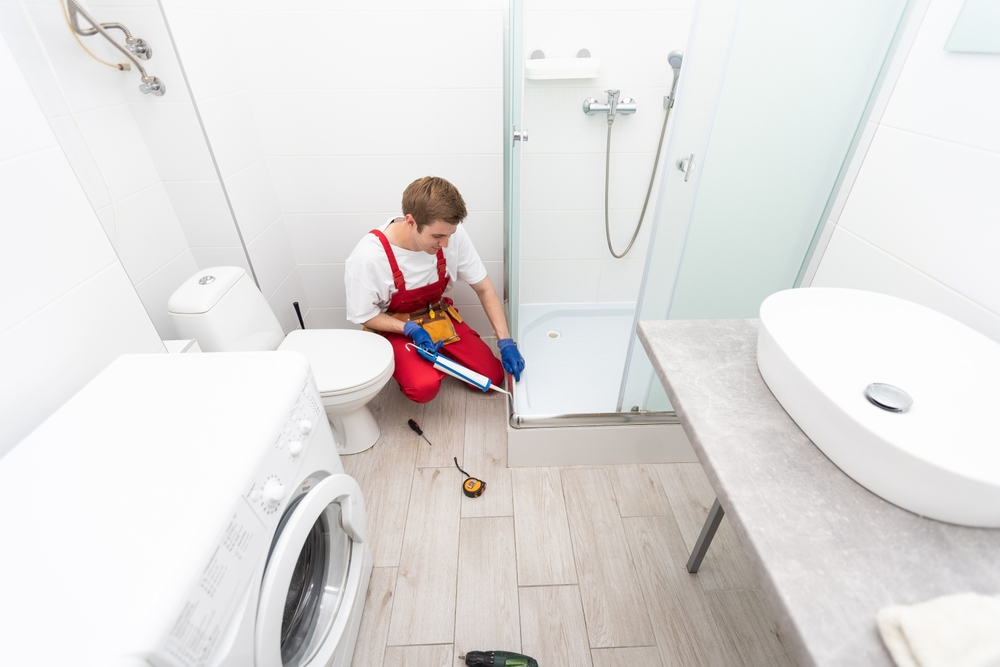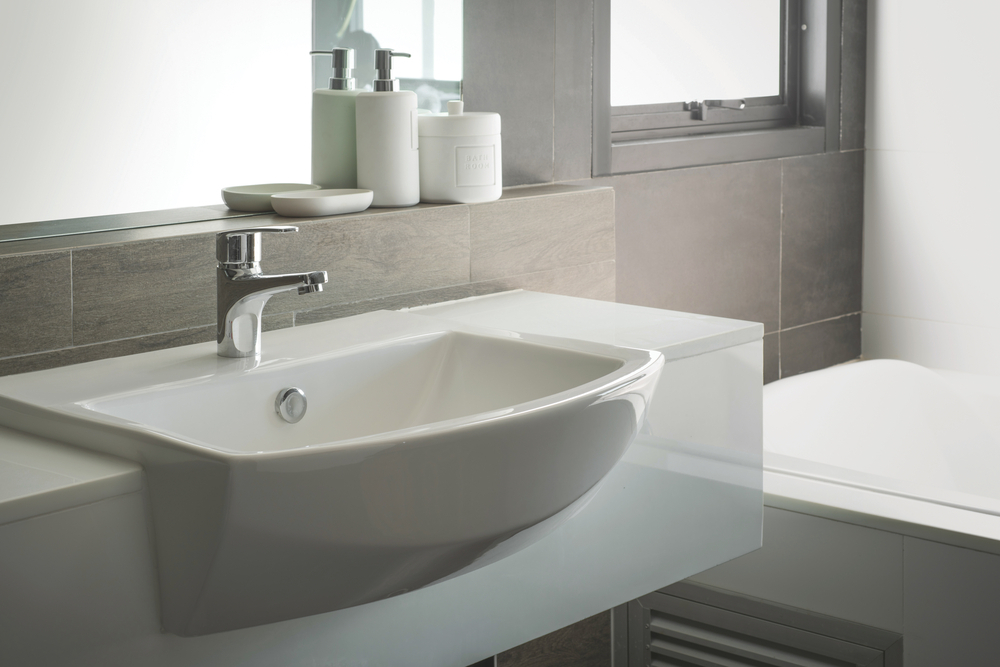Although installing and fixing showers and bathtubs seems easy, doing it right guarantees a safe, effective bathroom with a long lifetime. Correct installation guarantees everyone using the bathroom’s comfort and well-being in addition to increasing value to your house. Ignoring repairs or poor installation may have expensive results including leaks, water damage, even structural problems.
This tutorial will go over the need of correct inshttps://plumbingservicesca.com/services/tallation, offer doable advice, and handle typical repair problems. We will also go over when to call a professional and when to do some DIY. At last, you can find basic maintenance advice to keep showers and bathtubs in best shape. Let’s start right away!
1. The Importance of Proper Installation
Adding a shower or bathtub goes beyond just a decorative enhancement. It influences your bathroom’s safety and usefulness. Bathtubs and showers should be securely installed, appropriately leveled, leak free when done right. Moreover, a correct installation increases the lifetime of your bathroom fittings.
Ensuring Functionality and Safety
The installation of your bathtub or shower will mostly determine the usefulness of your bathroom. Water should run correctly, drainage should be seamless, and the fixtures should be stable. A well-installed shower or bath lowers the possibility of unintentional slips, therefore guaranteeing the general safety of your residence. Moreover, properly installed fixtures help to lower the possibility of mold and mildew development, which are not only aesthetically unpleasant but also dangerous for health.
Potential Risks of Improper Installation
Inappropriate installation might cause many problems that could compromise the whole construction of your bathroom. If the bathtub is not properly balanced, for example, water could pool in specific locations and cause leaks and damage. Leaks can cause structural damage, mold development, and even costly repairs by seeping into floor and walls. Moreover, a poorly built shower could cause insufficient water pressure or drainage problems, therefore aggravating your daily life.
Following the correct installation techniques and using the necessary equipment and materials will help one avoid these issues. Whether you are replacing an old shower or a new bathtub, careful installation will help you avoid problems down road.

2. Tips for Installing Bathtubs and Showers
Knowing the need of correct installation now, let’s explore useful advice for shower and bathtub installation. Using the correct technique will help to guarantee a flawless and successful installation.
Preparing the Workspace
You really should get ready your workplace before beginning the installation. Clear the space of any trash first, then make sure you have enough of room to work comfortably. Get what you will need: a level, measuring tape, screws, a power drill, caulk. Having everything right at hand will help the procedure go more smoothly.
Should you are replacing an old shower or bathtub, be sure to gently remove the current fittings. To prevent any inadvertent water damage, cut off the water supply and disconnect the plumbing. Eliminate any old caulking, tiles, or trim; then, look for mold or water damage in the area. Should problems arise, resolve them before starting the installation.
Step-by-Step Installation Process
- Measuring the Space: Calculate the space for the shower or bathtub installation. Perfect fit of your new fixture depends on accurate measurements. Don’t forget any extra room required for trim or piping.
- Leveling the Base: Level the base once you know the right measurements. A level base guarantees stability of the bathtub or shower and correct drainage of water. If needed, modify the base with shims; before fastening it in place, double-check with a level.
- Securing the Bathtub or Shower: Level the base then screw or bracket securely the bathtub or shower to the wall studs. This stage is absolutely important to stop any movement capable of causing structural problems or leaks. Follow manufacturer directions for securing the fixture; different kinds of tubs and showers may call for different installation techniques.
- Connecting the Plumbing: Connect the plumbing after the fixture is stable. Make sure no leaks exist and that every connection is tight. Before starting the installation, one should check the drainage and water flow.
- Sealing the Edges: To stop water from leaking into the floor or wall, lastly caulk the bathtub’s or shower’s edges. Apply waterproof caulk meant for bathrooms evenly to get a neat finish.
Tips for Specific Types of Installations
- Freestanding Tubs: Modern bathrooms often feature freestanding tubs, but they need particular care during installation. Since freestanding tubs are generally more exposed than built-in models, make sure the floor can handle the weight of the tub and take great care securing the plumbing.
- Alcove Tubs: Installable in a three-wall enclosure, alcove tubs are a space-efficient option. Make sure the piping is exactly straight and that the alcove tub fits tightly between the walls when you install it. To stop water damage, run waterproof backer boards underneath the walls.
- Corner Tubs: In smaller bathrooms, corner tubs are fantastic for optimizing available space. Install a corner tub such that the walls are exactly square to prevent gaps. Check that the plumbing is appropriately connected and properly secure the tub to stop any movement.

3. Common Shower and Bathtub Repair Issues
Shower and bathtub problems can arise over time even with correct installation. Timeliness of repairs and consistent maintenance help avoid more major issues. These are some typical shower and bathtub repair problems together with how to fix them.
Clogged Drains
Among the most often occurring problems in bathrooms are clogged drains. Debris, hair, soap scum, and trash can build up in the drain and either cause slow flow or total clogs. Use a drain cover to capture hair and routinely clean the drain with a mixture of baking soda and vinegar to avoid obstructions. Should the clog remain, you might have to dislodge the blockage with a plumbing snake or plunger.
Cracked Tiles
Apart from their appearance, cracked tiles could cause water damage if not quickly fixed. Water can undermine the underlying construction by seeping through the fractures. Fix a cracked tile by removing the broken tile and substituting a fresh one. Make sure the new tile is correctly sealed to avoid problems down road.
Worn-Out Caulking
Water leaks can result from caulking around showers and bathtubs wearing down over time. Check the caulking often and repair it should you find any gaps or cracks. Make sure the old caulking is totally removed before applying fresh, waterproof caulk consistently along the seams.
Leaky Faucets
A leaking faucet raises your utility costs and wastes a lot of water. Most usually, a worn-out washer or seal causes a leaking faucet. Turn off the water supply and disassemble the faucet to address the problem. After replacing the broken components, reinstall the faucet such that every connection is snug.
Mold and Mildew Growth
Mold and mildew flourish in moist surroundings, hence bathrooms are a target especially. Make sure your bathroom is well-ventilated and clean any routinely moisture-prone sections to stop mold development. Clean mildew or mold right away with a bleach and water mixture.
4. DIY vs. Professional Repairs
When considering a shower or bathtub repair, you might question whether you should do it yourself or call a specialist. While certain repairs call for the skills of a qualified professional, others can be completed with just basic tools and knowledge.
Assessing Your Skills
Evaluate your own ability and the difficulty of the work before trying a repair. Should the repair call for simple chores like unclogging a drain or caulking replacement, you probably can do it yourself. It would be advisable to consult a professional, though, if the repair calls for specialized tools or plumbing or electrical work. Attempting difficult repairs without the required knowledge might cause more damage, which could be expensive to correct.
Potential Risks of DIY Repairs
While do-it-yourself repairs save money, they also carry some hazards. A do-it-yourself fix done wrong could aggravate the original problem more than it repairs. For instance, mistakenly mending a leaky faucet may result in water damage, and replacing tiles wrongfully might cause them to fracture once more. Furthermore, some repairs can void your fixtures’ guarantee if they are done without a licenced specialist.
See a professional if you’re not sure your capacity to finish a repair is sufficient. Often offering a warranty for their work, they have the knowledge and tools to execute the task appropriately.
5. Tips for Repairing Bathtubs and Showers
Here are some useful ideas for fixing showers and baths for people who are sure they are good do-it-all’s. These detailed directions will enable you to handle typical problems efficiently.
Fixing a Leaky Faucet
- Turn Off the Water: To prevent inadvertent flooding, switch off the water supply before beginning any repairs.
- Disassemble the Faucet: To reach the internal parts, carefully remove the faucet handle and any other component.
- Replace the Damaged Parts: Usually from a worn-out washer or O-ring, find the leak source and replace it with a new one.
- Reassemble the Faucet: Reinstall the faucet making sure every connection is strong and tight.
- Test for Leaks: Back on the water supply, check the faucet for leaks. Should the problem linger, you might have to see a specialist.

Replacing Damaged Tiles
- Remove the Damaged Tile: Carefully remove the damaged tile with a chisel and hammer, being sure not to break the surrounding tiles.
- Prepare the Surface: Apply a layer of tile adhesive and clean the space the tile was taken from.
- Install the New Tile: Press the new tile into position and let the adhesive completely cure.
- Apply Grout: Apply grout around the margins of the new tile once the adhesive has dried to guarantee a smooth and equal finish.
- Seal the Tile: Apply a sealer once the grout has set to guard the tile against moisture and stop future damage.
Safety Precautions
Always put safety first whether doing any repairs. Before doing any plumbing, cut off the water supply; if your repairs call for electrical components, disconnect the power. To guard yourself from danger, wear gloves and safety eyewear; also, use the suitable tools for the task. See a professional if at any time you find yourself unsure about a repair.
Maintaining and Preventing Future Issues
Regular maintenance is quite important to maintain your showers and bathtubs in good shape. To avoid clogs, routinely clean your drains; look for deterioration in your tiles and caulking. Maintaining grout and caulking helps to stop water from seeping into floors and walls, therefore lowering the chance of water damage.
After every use, also take care to clean shower walls and doors from extra water using a squeegee. This little action can stop wet stains and lower the mold and mildew development risk. Maintaining preventative maintenance helps you to prolong the lifetime of your bathroom fittings and prevent later expensive repairs.
Conclusion
Your bathtubs and showers must stay effective, safe, and long-lasting via proper installation and regular repairs. Following the advice in this book will help you confidently address typical installation and repair tasks. These guidelines can help you build a comfortable and useful bathroom whether your project involves replacing a new bathtub, repairing a broken faucet, or preserving current bathroom fixtures.
Remember, even if do-it-yourself repairs can save money, you should be aware of your limitations and know when to hire a professional. Maintaining the integrity of your bathroom and avoiding more major problems depend mostly on regular maintenance and quick repairs. By acting early, you will guarantee a bathroom fit for years to come.
Plumbing Services CA
https://maps.app.goo.gl/31Yt4rhDrainzNJ4A
(279) 203-0765
https://plumbingservicesca.com/
